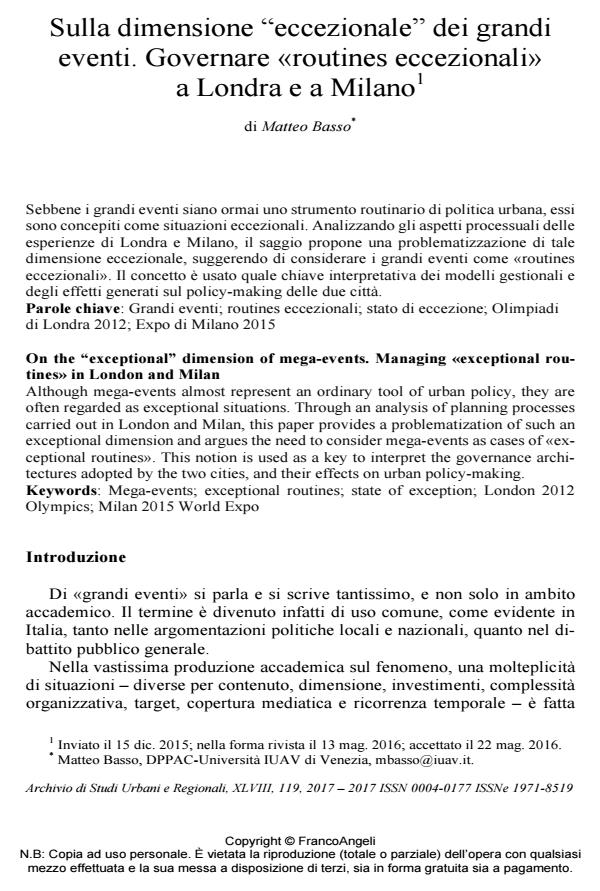On the "exceptional" dimension of mega-events. Managing «exceptional routines » in London and Milan
Journal title ARCHIVIO DI STUDI URBANI E REGIONALI
Author/s Matteo Basso
Publishing Year 2017 Issue 2017/119
Language Italian Pages 22 P. 97-118 File size 142 KB
DOI 10.3280/ASUR2017-119007
DOI is like a bar code for intellectual property: to have more infomation
click here
Below, you can see the article first page
If you want to buy this article in PDF format, you can do it, following the instructions to buy download credits

FrancoAngeli is member of Publishers International Linking Association, Inc (PILA), a not-for-profit association which run the CrossRef service enabling links to and from online scholarly content.
Although mega-events almost represent an ordinary tool of urban policy, they are often regarded as exceptional situations. Through an analysis of planning processes carried out in London and Milan, this paper provides a problematization of such an exceptional dimension and argues the need to consider mega-events as cases of «exceptional routines». This notion is used as a key to interpret the governance architectures adopted by the two cities, and their effects on urban policy-making.
Keywords: Mega-events; exceptional routines; state of exception; London 2012 Olympics; Milan 2015 World Expo
- Re-tracing the rise of institutional investor landlords in London and Milan through the lens of state de-risking Emanuele Belotti, Alberto Bortolotti, Alessandro Coppola, Piero Corcillo, Marta Cordini, Stuart Hodkinson, Paul Watt, in European Urban and Regional Studies 09697764251384115/2025
DOI: 10.1177/09697764251384115
Matteo Basso, Sulla dimensione "eccezionale" dei grandi eventi. Governare «routines eccezionali» a Londra e a Milano in "ARCHIVIO DI STUDI URBANI E REGIONALI" 119/2017, pp 97-118, DOI: 10.3280/ASUR2017-119007